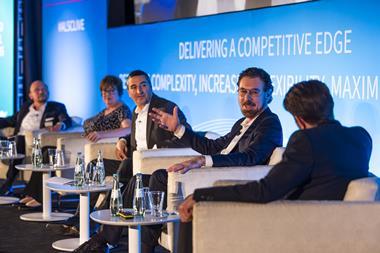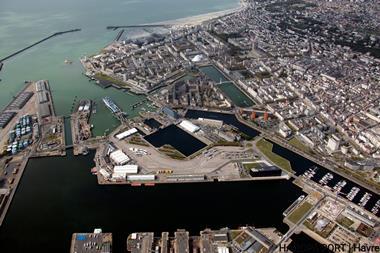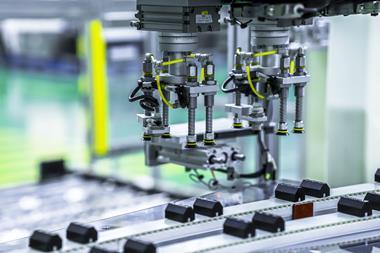When the best-laid schemes of supply chain management go askew, premium freight is the last and best resort to avoid the worst. Marcia MacLeod looks at the contingency thinking and critical strategies that save the day.
In an ideal world the automotive supply chain would run smoothly. Parts would have plenty of time to be shipped by seafreight or road haulage and no one would ever worry about production line stoppages. But of course, reality presents a very different picture. Production can be delayed for a number of reasons, from staff illness and equipment failure to the inability to obtain raw materials or even factory fire. Transport disruptions can cause problems, too, from bad weather, port and road congestion, or a surfeit of cargo, which means something has to be left on the quay or in the yard.
Unexpected difficulties such as these can lead to huge financial penalties for late delivery, line stoppages and ultimately the delay in producing and delivering the finished vehicle. And, since no vehicle means no income, everyone in the supply chain, from the OEM downward, suffers. To avoid losing out, OEMs and suppliers are increasingly turning to premium freight–airfreight instead of seafreight, air charter instead of scheduled airline, road express instead of groupage, or even ordinary full load–to, literally, deliver the goods.
Premium freight has come to the rescue of so many shippers, that some are now beginning to build this into their normal supply chains. “Many customers who used to come to us only for urgent cargo to Europe and the Middle East are now asking us to deliver to China,” says Donna Gerke, district manager for Lufthansa Cargo Detroit. “We can see automotive business increasing further in the future, too. And as well as parts, we are moving increasing numbers of whole vehicles. From January to March 2009, we moved 10 cars; during the same period this year, we moved 50 or 60. Most of these are test vehicles, meeting engineers that fly to a test site from all over the world. But there is also an increased demand from OEMs flying cars to auto shows.”
 “Strategically, OEMs and tier one suppliers are looking more at the entire supply chain and drawing up contingency plans –‘what-ifs’–to minimise disruption,” says Brad Brennan, managing director at Evolution Time Critical. Brennan believes that such preparation is especially important as OEMs set up new production plants and source from new suppliers. He says that manufacturers are increasingly asking his company to carry out studies to understand the potential supply chain with suppliers, what will happen if something goes wrong and how to prevent those problems, or at least have an alternative to keep the supply chain running.
“Strategically, OEMs and tier one suppliers are looking more at the entire supply chain and drawing up contingency plans –‘what-ifs’–to minimise disruption,” says Brad Brennan, managing director at Evolution Time Critical. Brennan believes that such preparation is especially important as OEMs set up new production plants and source from new suppliers. He says that manufacturers are increasingly asking his company to carry out studies to understand the potential supply chain with suppliers, what will happen if something goes wrong and how to prevent those problems, or at least have an alternative to keep the supply chain running.
Major problems areas include customs issues, seasonal weather patterns, faulty or wrong components, or simply because a supplier has trouble meeting demand. The OEM –and the supplier–needs to have alternatives in place. “The auto industry used to respond to problems with a knee-jerk reaction; now they plan for the unexpected. They need to have ‘Plan Bs’ in place before they start setting up that supply chain,” says Brennan.
Neal Williams, managing director at Priority Freight, agrees. “One of the biggest drivers towards premium freight has been the global market place,” he emphasises. “As OEMs source components farther afield, it extends the supply chain. Although the plans may call for seafreight, these are disrupted so often that the OEMs and suppliers have to bring in premium freight on a daily basis to resolve problems happening in China, India or South America, for example. They cannot make up lost time by sea.”
To give an indication of the industry’s reliance on airfreight, European production lines began stopping within 48 hours of the closure of European airspace, according to Williams.
Personalisation and consumer demand adds to the problem. As OEMs try to increase sales, they want to offer more personalisation, but at the same time they don’t want to compromise the supply chain or the short lead time for the consumer. To be able to achieve this, they need to build some premium freight into the supply chain, especially for the higher value, slower moving parts that consumers go for, like special dashboards or high-end wheels.
 Evolution Time Critical was called in to help one customer who did not anticipate a run on a particular wheel option. When demand far exceeded supply, the wheels had to be flown from China by a number of routes to ensure the cars were ready on time.
Evolution Time Critical was called in to help one customer who did not anticipate a run on a particular wheel option. When demand far exceeded supply, the wheels had to be flown from China by a number of routes to ensure the cars were ready on time.
“High volumes of heavy parts still primarily move by ocean or road,” admits one tier one supplier. “But where parts are small and expensive, such as shifters for changing gear and other electronics, we find airfreight being used more and more as part of the supply chain. The capital tied up during the six to eight weeks the parts are at sea far outweighs the cost of the airfreight, particularly during the current climate when shipping lines have adopted slow steaming to save fuel.”
Premium doesn’t have to entail airfreight, though. For European logistics, a disrupted milkrun from a strike, peak demand or part shortage may result in a dedicated truck or van being employed to ship much-needed parts outside the normal schedule. Taxis have even been used to move parts for prototypes and test runs.
The recession has had an impact, too. “Before the recession we didn’t see premium freight used that much,” says Stefan Brunner, director automotive and tyres for North Europe at Ceva Logistics. “But the recession changed production patterns: lines would be stopped and re-started, inventory was cut, plants were shut and then open and then shut again. The supply chains were disrupted and emergencies became much more normal.
“When demand increased, OEMs often needed parts in a hurry, and long lead times from places like China meant that ocean freight was not an option,” he says.
 The closure of European airspace from volcanic ash certainly made things worse, according to Brunner. Airfreight was not possible, and when airspace reopened there was such a backlog that charters were required to ensure parts were delivered on time. Even for intra-European movements, Ceva chartered small planes or helicopters, or used vans instead of lorries to ship parts.
The closure of European airspace from volcanic ash certainly made things worse, according to Brunner. Airfreight was not possible, and when airspace reopened there was such a backlog that charters were required to ensure parts were delivered on time. Even for intra-European movements, Ceva chartered small planes or helicopters, or used vans instead of lorries to ship parts.
The recession and personalisation are, to some extent, intertwined. As Williams explains, the recession led to more build-to-order rather than build-to-stock, which puts more pressure on the supply chain. This has become more consumer driven. But there is one big barrier to premium freight, as Andrew Austin, CEO at Priority Freight, points out.
“We are still working in an industry in which companies do not like to spend money to solve problems,” Austin says. “But the supply chain is particularly taut in some places and if [manufacturers] don’t spend the extra on premium freight, they may not have a car to sell.”
The disruptions caused by the closure of European airspace from the volcanic ash cloud had far reaching effects. An OEM in South Africa was in such danger of running out of chassis parts that if new suppliers were not received within 36 hours, the production line would grind to a halt. Although the shipment request came from the OEM’s UK factory, the chassis supplier was in Romania, and there are no direct flights to South Africa from Bucharest. The OEM turned to Priority Freight for help. “We received a request to move 730kgs of chassis parts, split into three pallets, at 15:00 one April afternoon,” recalls Neal Williams. “Since there were no direct flights to Johannesburg, we looked at various options, including chartering an aircraft direct from Romania to South Africa. But that was expensive–over $120,000–and we were sure we could save our client a significant sum by thinking creatively.”
Instead, Priority combined a charter with scheduled airfreight. At 15:30, a vehicle was dispatched to Pitesti in Romania, where it picked up the three pallets at 17:00, drove 129kms and delivered them to Otopeni, Bucharest Airport at 19:00. Customs was cleared and handling completed within just 30 minutes, allowing the parts to be loaded onto a dedicated Metro aircraft charter at 20:00. It took off half an hour later for Rotterdam airport. After arrival in Rotterdam at 01:30, the load was transferred to a dedicated express van waiting to take the goods to Schiphol Airport, Amsterdam, where it was delivered to the Priority handling agent at 03:00. Goods were then loaded onto the scheduled 06:36 KLM departure for arrival in Johannesburg at 21:30 local time.
Cargo cleared customs within two hours, when it was loaded onto a Priority express vehicle for the one-hour drive to the OEM. It took 31 hours door-to-door for the chassis parts to reach the warehouse, which served the production line, but they got there five hours before a shutdown, which would have cost hundreds of thousands of dollars.
Thanks to the time difference, a Swiss supplier of driveshaft components was able to get its consignment to the US before a line stoppage anticipated the next day. This dilemma was another caused by the volcanic ash cloud: although scheduled flights had resumed, there was such a backlog of cargo that the shipper could not get a guaranteed departure. They turned to Evolution Time Critical.
One hundred and two precision steel tubes, weighing 341kg, were collected from Aarburg on midday on a Thursday and rushed by road to a chartered Lear Jet at Zurich. To refuel, the Lear Jet had to be routed Reykjavik- Gander, Canada-Chicago O’Hare. However, before it reached the US, Evolution heard that Chicago was seriously congested, so the flight was diverted to Chicago Executive Airport, formerly known as Palwaukee, a small airport not far from O’Hare. Although obtaining landing rights can be a lengthy process, a new flight plan was filed with the US CAA while the aircraft was being re-fuelled in Ypsilanti Airport, Detroit. The new plan was quickly approved and customs clearance was completed at Ypsilanti, speeding up the delivery process.
As Chicago Executive Airport is small and flexible, it could accept business at short notice. The shipment was handed over at midnight, enabling the supplier to avoid penalties and maintain a good relationship with its OEM customer. “This is very important in charter operations,” emphasises Brad Brennan. “We need to move quickly and are often dealing in minutes, not hours.”
Flash Line Germany came to the rescue of an OEM after a Polish manufacturing plant caught fire. The metal plate supplied from Poland was a major component of production in Britain, so it was vital to find an alternative supply. Flash Line managed 112 premium shipments–28 charter flights, 17 onboard couriers, 29 scheduled air departures and 38 road shipments–using a number of airlines and road hauliers.
In the beginning of the project, cargo was collected every two hours in Germany, from where it was either stuck on a chartered aircraft or sent by special road service to Romania, where it underwent further processing before being shipped to the UK by aircraft. Scheduled carriers included Lufthansa, British Airways and Czech Airlines, and charter flights were everything from Fairchild Metroliners and Saab 340 freighters to an Antonov 26, a Piper Cheyenne and even a Cessna 525 Citation Jet. To take just one shipment as an example, five pallets weighing 770kg were collected in Germany at 10:00, delivered to Stuttgart Airport at 10:35 and took off at 11:10. After landing in Romania at 14:30, the goods were delivered to the factory for conditioning. They were then collected again, this time taking up seven pallets weighing 1,050kg, at 18:45 to arrive back at Arad Airport at 19:30. The cargo was flown to Birmingham Airport, leaving Romania at 20:20 and arriving in the UK at 22:40, where they were delivered to the plant before midnight.























